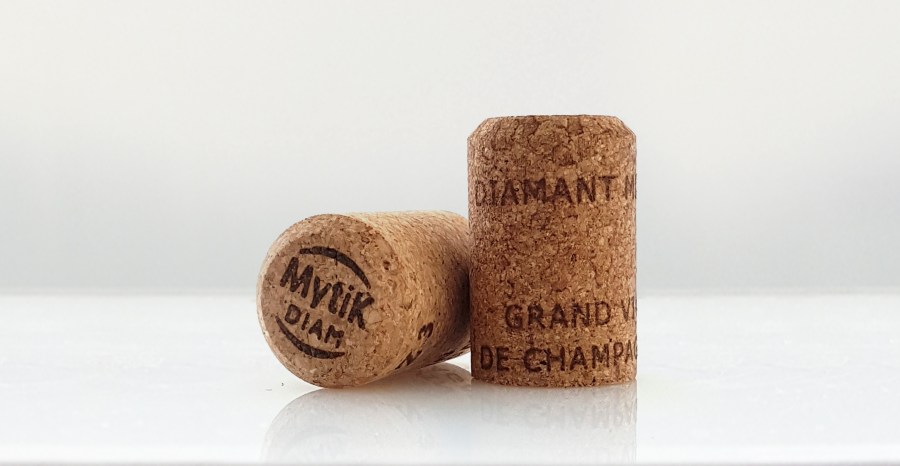As February and March and the weather warms up, the last stages of wine stabilisation and clarification are taking place. Tartrate crystals are dropping out partly due to the weather but as well as some wine makers choosing malolactic fermentations to soften the acidity depending on the wine style.
Many of these wines are then being prepared for tirage and secondary fermentation in bottle to produce quality English Sparkling Wine. There will be a certain percent of wines produced for the still wine market and choosing the right bottle and closure is a critical choice as to how the wine develops.
Choosing the right closure to fit your wine style and profile is important from both a technical and aesthetic point of view. The closure is the only barrier between your wine and oxygen, which is a key component of how wines develop through the vinification process. Other wine components, such as tannins also have protective anti-oxidant effect on wine as they undergo complex polymerisation reactions, these can also be added to the wine as chips/staves or from barrel extraction. The closure allows a certain amount of oxygen to enter the bottle and it plays a critical role as the wine develops. So choosing the right closure is critical in how the wine develops. There is a fantastic range of closures available to the producer to manipulate the oxygen ingress, often referred to as the OTR rate (Oxygen Transfer Rate). Cork alone fundamentally cannot guarantee a consistent OTR rate due to the random cell structure found in nature. Aesthetically it may be the right choice for a wine but to guarantee technical consistency you have to look to alternative closure choices that give different properties. Outlined below is a short summary of different closures that can be the right fit for your wine style. These include a technical cork like Diam and Mytik, 30×60 screw cap with different liners, Vinolok glass stoppers and a synthetic cork derived from a recyclable bio-polymer.
Diam and Mytik
The technical corks from Diam for still and sparkling (Mytik) have fast become the go to cork that guarantees to be taint free. The patented method cleans cork crumb with high pressure CO2 and removes all TCA taint as well as over 170 off aromas. This leaves a completely clean cork that is then rebuilt to varying levels of OTR rates labelled as 1, 3, 5, 10 and 30. The numbers refer to the years the wine is recommended to be laid down and 30 has the lowest OTR levels. Diam Origine is a new range of corks that are constructed from natural ingredients. The corks can come in a range of sizes and permeability rates to suit the winemakers needs and can have laser or fire branding. Capsuling with tin, aluminium or PVC as well as wax can finish the wine and also has an affect on the OTR rates
Screw caps
Screw caps are the predominant closure in the UK market for still wines and come with two industry standard liners, Saranex or Tinsaran. A saranex liner offers a medium permeability rating whereas the Tinsaran has a very low OTR rate. The pathway of oxygen transfer are from the sides of the screw cap and critically the application and the glass quality play a critical role in how well this is controlled. Due to the application and glass variability, laboratory tests can be very different to real world application. Having a correctly set capping head is critical to ensure uniformity in application.
Vinolok
The glass stoppers again ensure no taint to the wine being bottled, the sealing ring gives consistent OTR performance, and it is always recommended to check compatibility with bottles coming in a variety of sizes from 17.5 to 21. Highly customisable and decorative they can really enhance a wine’s brand and provide a convenient opening and closing for the end customer. Permeability rates from the AWRI (2014) show good performance compared to other closures on the market.
Nomacorc
A synthetic stopper can regulate the OTR rates in wine with new advancements in the manufacturing process. Nomacorc Greenline is TCA and fault free and can give consistent and variable OTR rates depending on the application and wine style. Being a bio-polymer from plant sources also means the range is fully recyclable, carbon neutral and gives a consistent and reliable performance.
There are other alternative closures on the market but the ones covered here give the winemaker and producer some great options and technical performance to control oxygen and ultimately produce a consistent high quality wine. For further information and an upcoming event from please see http://www.erben.co.uk/events or email mark@erben.co.uk for further information.




